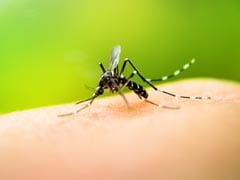In this article, we'll debunk some of the most persistent myths about HIV with verified facts to promote a more informed and compassionate society.

Busting Myths About HIV With These Facts
Despite decades of awareness campaigns, many myths about HIV continue to fuel stigma and misinformation. Many people still believe HIV can be transmitted through casual contact or that it only affects certain groups. These false beliefs can prevent individuals from seeking timely testing or treatment. According to the World Health Organisation (WHO) and UNAIDS, spreading accurate information is essential to fight discrimination and reduce new infections. In this article, we'll debunk some of the most persistent myths about HIV with verified facts to promote a more informed and compassionate society.
Importance of addressing myths about HIV
Misinformation about HIV leads to stigma, fear, and delayed diagnosis. The WHO stresses the importance of public education to promote understanding, encourage safe practices, and support early testing and treatment. Here are the facts that eliminate these myths about HIV.
Myth 1: HIV can spread through hugging, kissing, or sharing food
Fact
HIV is not transmitted through casual contact. It spreads through specific bodily fluids; blood, semen, vaginal fluids, rectal fluids, and breast milk, not saliva or skin contact. According to the CDC, sharing food, hugging, or using the same toilet does not transmit HIV.
Myth 2: Only certain people, like drug users or sex workers, get HIV
Fact
Anyone can contract HIV if exposed to the virus. While some behaviours increase risk, HIV does not discriminate by gender, sexual orientation, or social status. The UNAIDS programme highlights that awareness and prevention should be universal.
Myth 3: HIV always leads to AIDS
Fact
With early detection and proper treatment, people living with HIV can live long, healthy lives without developing AIDS. Antiretroviral therapy (ART) can keep the virus under control, sometimes rendering it undetectable.
Myth 4: HIV-positive people cannot have children
Fact
With proper medical support and treatment, HIV-positive patients can conceive and give birth to HIV-negative children. WHO recommends ART during pregnancy to reduce HIV transmission risk to below 1%.
Myth 5: HIV can be cured with herbal remedies or alternative therapies
Fact
There is currently no cure for HIV. Only scientifically approved antiretroviral drugs can manage the virus effectively. Relying on unproven treatments can delay essential medical care and worsen outcomes.
Myth 6: You can tell if someone has HIV by looking at them
Fact
HIV has no visible symptoms in its early stages. Many people look and feel healthy for years. Regular testing is the only way to know your status. The National AIDS Control Organisation (NACO) in India promotes routine testing for early detection.
Myth 7: HIV transmission is guaranteed if your partner is positive
Fact
The risk of transmission can be drastically reduced with consistent condom use and ART. In fact, studies have shown that people with undetectable viral loads cannot transmit the virus sexually, a concept known as U=U (Undetectable = Untransmittable).
Myth 8: Getting tested for HIV is unnecessary unless symptoms appear
Fact
HIV can remain asymptomatic for years. Early detection allows timely treatment, preventing complications and reducing transmission. WHO recommends testing for anyone at risk or as part of routine health care.
Myths about HIV can be dangerous, fuelling stigma and discouraging people from seeking help. With verified facts and consistent public education, we can break down these misconceptions.
Disclaimer: This content including advice provides generic information only. It is in no way a substitute for a qualified medical opinion. Always consult a specialist or your own doctor for more information. NDTV does not claim responsibility for this information.
DoctorNDTV is the one stop site for all your health needs providing the most credible health information, health news and tips with expert advice on healthy living, diet plans, informative videos etc. You can get the most relevant and accurate info you need about health problems like diabetes, cancer, pregnancy, HIV and AIDS, weight loss and many other lifestyle diseases. We have a panel of over 350 experts who help us develop content by giving their valuable inputs and bringing to us the latest in the world of healthcare.














